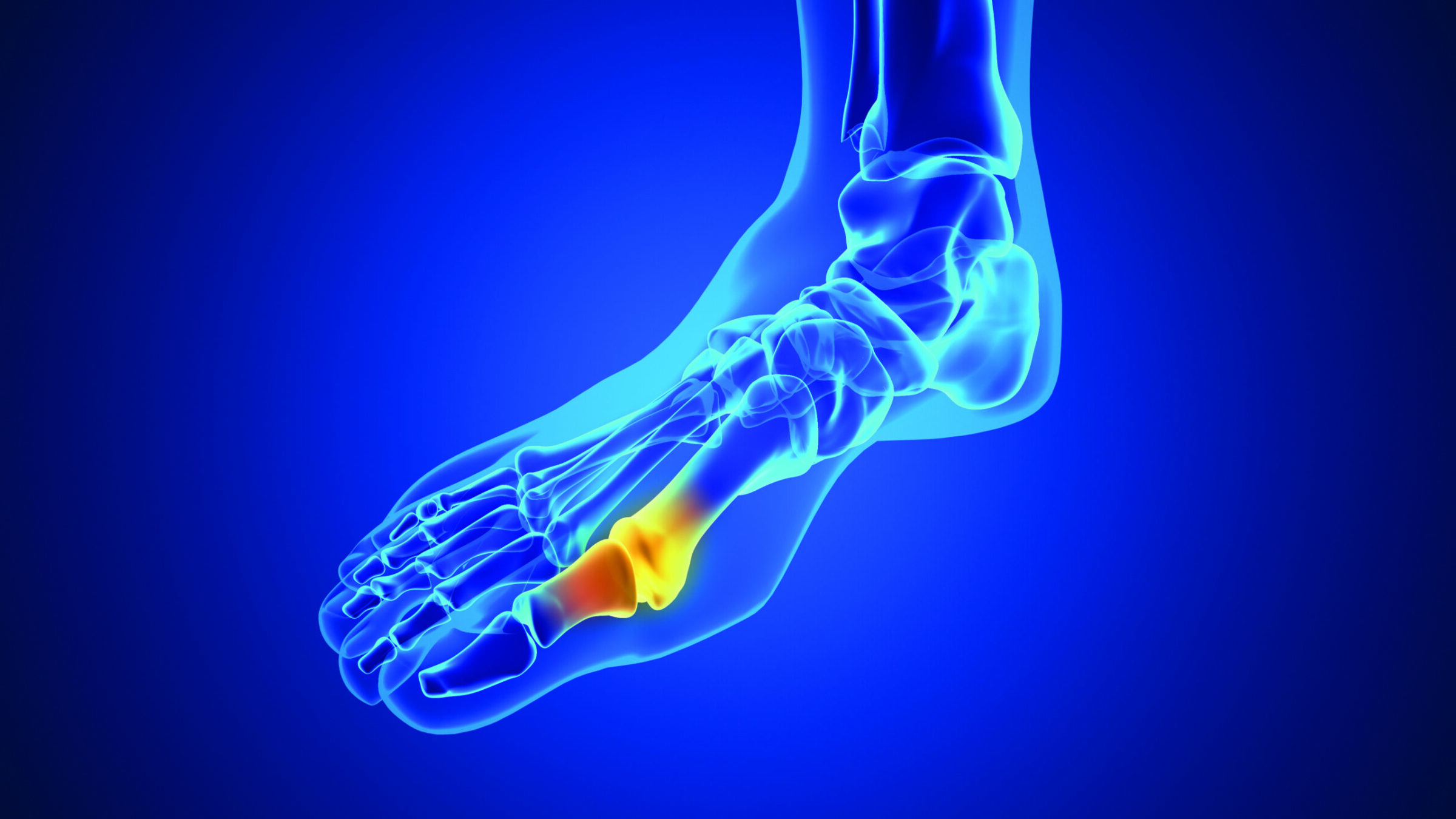For years, gout was considered a rich man’s illness, the result of overindulging in rich foods. But this painful form of inflammatory arthritis actually is an equal opportunity disease. Apart from causing joint pain, it may be the canary in the coal mine for heart disease—similar to other inflammatory conditions, such as rheumatoid arthritis, gout is a risk factor for heart problems. We asked rheumatologist Puja Khanna, MD, MPH, to explain how to avoid and treat gout.
What causes gout? The primary culprit is a buildup of uric acid, a natural byproduct of daily cell breakdown. A certain level of uric acid in your bloodstream is expected, but if your body can’t clear it properly, the level will start to rise. If it goes above 6.8 mg/dL, normally soluble uric acid can crystallize, and those uric acid crystals can deposit in your joints, causing the pain and swelling of a gout attack. Many people experience their first attack in a big toe’s joints, making it difficult to walk.
What’s more, a crystal deposit sparks a cascade of inflammation in various organs in the body…and more deposits. It also increases risk for painful kidney stones, almost a given when uric acid reaches levels of 10 mg/dL to 11 mg/dL.
There are many reasons why your body might have trouble clearing uric acid. About 75% of uric acid is eliminated through the kidneys, so a loss in kidney function is one possibility (kidney function declines by about 10% every decade). The other 25% of uric acid goes through the gut, so having diabetes or a gastrointestinal problem could hamper clearing uric acid. Estrogen helps with uric acid excretion, so women who are post-menopausal often develop gout…as do people with heart failure who use medications that increase uric acid, such as diuretics. Also: Some medications increase uric acid, including the diuretics Lasix (furosemide) and hydrochlorothiazide and anti-rejection drugs needed after an organ transplant. As a result, gout treatment helps in all such situations.
Benefits of treatment: Treating gout does more than stop painful flare-ups and crystal formation. It can root out the crystals, help your kidneys release uric acid and reduce risk for heart disease from the chronic inflammation state caused by gout. Though scientists still are working to understand exactly how gout increases this risk (along with the risk for stroke and peripheral vascular disease), one part of the puzzle is that the inflammation gout engenders damages blood vessels.
How gout is treated: The mainstay treatment is allopurinol taken orally. Careful dosing is essential—500 mg to 600 mg a day often is needed (some doctors prescribe only 100 mg to 300 mg, but that is not enough), but it can be dosed up to 800 mg. As allopurinol starts to break down existing crystals, these crystals may travel to other joints and cause a flare-up. To prevent this, your doctor should prescribe a short-term (five-to-seven-day) course of a second medication, colchicine, to manage the flare. In severe cases, you also may get relief from the temporary use of a steroid such as prednisone, taken orally or as an injection into an inflamed joint. It can take three to five years of allopurinol to fully remove crystal deposits, but flares should stop within a few months.
About 80% of people with gout are cared for by their primary doctor. Those with more severe gout will benefit from treatment by a rheumatologist and possibly a nephrologist for kidney care.
The Anti-Gout Lifestyle
Eat right. Diet can reduce uric acid levels by only about 1 mg/dL, so it’s not the primary treatment—but foods high in purines will amp up uric acid. Foods to avoid: Red meat, including game and organ meat…turkey…beer and other alcoholic beverages…sodas and other foods with high-fructose corn syrup…shellfish and even many fish that have otherwise-good-for-you omega-3s such as sardines, tuna and herring.
What you should eat: A fruit- and vegetable-based diet, with chicken and moderate amounts of low- and moderate-purine fish, such as monkfish and salmon, as the preferred proteins. There’s some evidence that milk, cherries and coffee help control uric acid.
Important: Drink three liters of water every day year-round, more when you have a flare-up because your kidneys will be working double time to help clear the crystal-induced inflammation.
Get other medical conditions under control, notably diabetes and hypertension, both of which are risk factors for heart disease. Controlling blood pressure, in particular, gives your kidneys more of a fighting chance to clear uric acid.
Lose weight. Dropping extra pounds improves all these conditions, plus you’ll reduce the number of cells your body must regenerate every day, reducing the amount of uric acid produced. Regular exercise also helps prevent gout attacks because it fights inflammation.
Preventing Gout
Just as your cholesterol, blood sugar and high blood pressure get checked, your doctor should start screening for uric acid by the time you turn 50. Also, address kidney issues promptly because a drop in function means a rise in gout risk.


